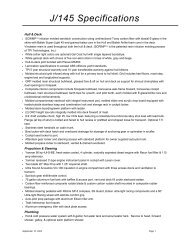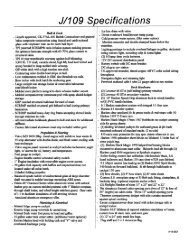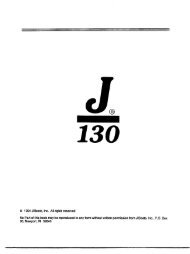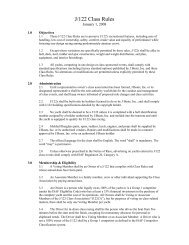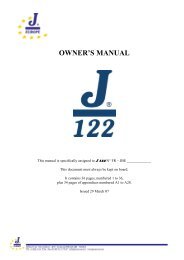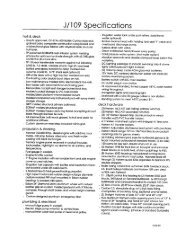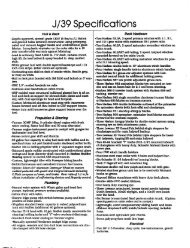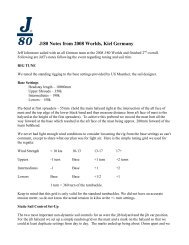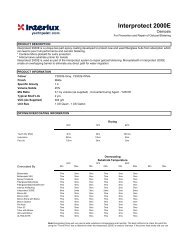J105 Owner Manual 2012.pdf - J/Owners
J105 Owner Manual 2012.pdf - J/Owners
J105 Owner Manual 2012.pdf - J/Owners
Create successful ePaper yourself
Turn your PDF publications into a flip-book with our unique Google optimized e-Paper software.
J/105 <strong>Owner</strong> Guide ...................................................................................................................................................................................................................................................... 44 <br />
Storage Tips <br />
Many of the maintenance problems surrounding boats can be pinpointed during the end-‐of-season<br />
haul-‐out. This is the time when a careful inspection will reveal the ravages of a long <br />
summer. If you live in colder climates, it is also the time to prepare the boat for what might be an <br />
even more brutal winter ashore. <br />
First, clean your boat as thoroughly as possible. Get the yard to use a high-‐powered hose to clean <br />
off most of the growth before it dries onto the bottom paint. You may have to use a scrub brush <br />
and putty knife for heavy growth, like barnacles, and for areas around the propeller and shaft and <br />
underneath the keel. <br />
Rigging <br />
Sails and lines should be removed at the end of each season, rinsed thoroughly in fresh water and <br />
stored in a warm, dry place. This will prolong their useful life as mildew can affect even today’s <br />
synthetic materials. Most sail lofts offer a cleaning/storage service. <br />
Engine <br />
Check the engine owner’s manual for maintenance guidance during the season and for the <br />
specific haul out procedures necessary to winterize the engine. Fill fuel tank to minimize <br />
condensation. In the exhaust system, water can accumulate in the bottom of the muffler. This <br />
should be drained using the drain plug, or anti-‐freeze added so residual water doesn’t freeze. <br />
Batteries <br />
It is preferable to remove the battery(ies) and store in a heated area, recharging periodically to <br />
maintain full charge status. If you are in warmer climates, it is possible to leave the battery <br />
aboard. Simply check once a month to ensure a full charge. <br />
Head <br />
Read the owner’s manual for specific maintenance procedures. Generally, you will want to drain <br />
all water and replace with an anti-‐freeze agent. To maintain the lubrication of its internal seals, <br />
flush through a light oil. Again, follow the manufacturer’s recommendations for winter <br />
maintenance. <br />
Bilges <br />
Pump bilges completely dry and use a strong cleaning solvent to eliminate odors and bacteria. <br />
Electronics <br />
Remove as many as possible to avoid condensation caused by the extreme rise and fall of <br />
temperature and humidity that come with winter.



